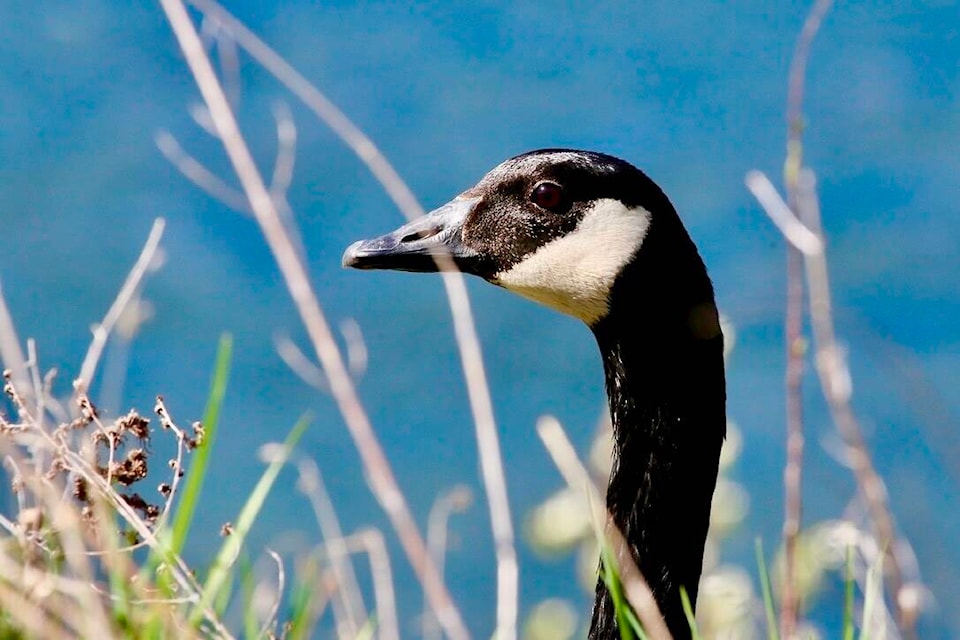Ron Wilson shares this striking image he captured showing the portrait of a Canadian icon, a Canada Goose, with the Columbia River in the background.
If you have a recent photo to share with Trail Times readers email it large-size to editor@trailtimes.ca.
Read more: Trail church picks up hundreds of pounds of goose droppings at popular park
Read more: Celebration of life planned for Kevin, Penticton’s late famous goose
Branta canadensis, better known as the Canada goose
Like most geese, the Canada goose is primarily herbivorous and normally migratory; often found on or close to fresh water, the Canada goose is also common in brackish marshes, estuaries, and lagoons.
Extremely adept at living in human-altered areas, Canada geese have established breeding colonies in urban and cultivated habitats, which provide food and few natural predators.
The success of this common park species has led to its often being considered a pest species because of its excrement, its depredation of crops, its noise, its aggressive territorial behavior toward both humans and other animals, and its habit of stalking and begging for food, the latter a result of humans disobeying artificial feeding policies toward wild animals.
Habitat
This species is native to North America.
It breeds in Canada and the northern United States in a wide range of habitats. The Great Lakes region maintains a large population of Canada geese. Canada geese live year-round in the southern part of their breeding range, including the northern half of the United States’ eastern seaboard and Pacific Coast, and areas in between. Between California and South Carolina in the southern United States and in northern Mexico, Canada geese are mainly present as migrants from further north during the winter.
In recent years, Canada goose populations in some areas have grown substantially, so much so that many consider them pests for their droppings, bacteria in their droppings, noise, and confrontational behavior. This problem is partially due to the removal of natural predators and an abundance of safe, human-made bodies of water near food sources, such as those found on golf courses, in public parks and beaches, on sports fields, and in planned communities. Due in part to the interbreeding of various migratory subspecies with the introduced non-migratory giant subspecies, Canada geese are frequently a year-round feature of such urban environments.
